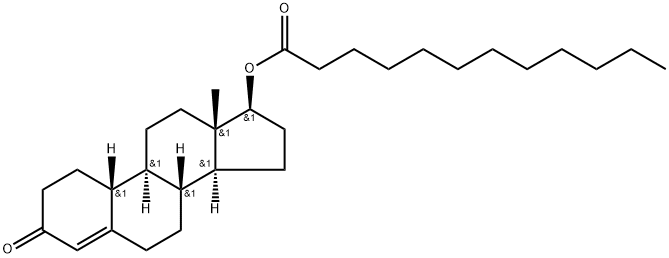LAUREL LEAF OIL
- CAS NO.:8006-78-8
- Molecular Weight: 0
- MDL number: MFCD00130604
- Update Date: 2024-12-18 14:08:57
What is LAUREL LEAF OIL?
Chemical properties
Bay oil/Bay rum oil is obtained by steam distillation of the leaves of Pimenta
racemosa (Mill.) J.W. Moore (Myrtaceae). It is a dark brown liquid with a strong,
spicy, clove-like odor.
d202020D 1.505–1.517; phenols content: min. 52%.
Evergreen bay trees or bay-rum trees, which are up to 12m high, grow wild
and are also cultivated in northern South America and in the West Indies. The
main cultivation area is the island of Dominica where with ~20 t/yr, 85% of the
worldwide demand are produced.
Themajor components of the oil aremyrcene (20–30%), eugenol (42–56%), and
chavicol (8–13%).The phenol content is determined largely by the last
two compounds.
Bay oil has antiseptic properties because of its high phenol content and is, therefore,
a classical ingredient for perfuming after-shave lotions.
Chemical properties
The volatile oil is distilled from the leaves of Pimenta acris Kostel. It has a pleasant aromatic odor and a pungent spicy taste
Physical properties
It occurs as a yellow to brownish-yellow liquid and is soluble in alcohol and glacial acetic acid. Solutions in alcohol are acid to litmus.
Occurrence
Found in the leaves of Laurus nobilis L(Fam. Lauraceae).
The Uses of LAUREL LEAF OIL
Bay rum, fragrances, and flavors.
Definition
A yellow essen-tial oil, slightly levorotatory.
Preparation
By steam distillation of the leaves of Laurus nobilis(Gildemeister & Hoffman, 1959).
Essential oil composition
The main constituent of laurel leaf oil is cineole
Pharmacology
Pharmacological effects on circulation, such as the action on excised toad heart, rabbit heart, respiration and blood pressure, and on blood vessels of the hind legs of the toad were studied for various essential oils, including leaf oil from Laurus nobilis. The oils generally depressed the heart rate and decreased blood pressure (Haginiwa, Harada, Nakajima & Sakai, 1962).
Safety Profile
Moderately toxic by ingestion. When heated to decomposition it emits acrid smoke.
Properties of LAUREL LEAF OIL
| Boiling point: | 245 °C(lit.) |
| Density | 0.96 g/mL at 25 °C(lit.) |
| refractive index | n |
| FEMA | 2122 | BAY LEAVES, WEST INDIAN, OIL (PIMENTA ACRIS KOSTEL) |
| Flash point: | 135 °F |
| Odor | at 100.00 %. bay |
| EPA Substance Registry System | Bay oil (8006-78-8) |
Safety information for LAUREL LEAF OIL
| Signal word | Warning |
| Pictogram(s) |
 Flame Flammables GHS02  Exclamation Mark Irritant GHS07 |
| GHS Hazard Statements |
H226:Flammable liquids H302:Acute toxicity,oral H315:Skin corrosion/irritation |
Computed Descriptors for LAUREL LEAF OIL
LAUREL LEAF OIL manufacturer
New Products
(S)-3-Aminobutanenitrile hydrochloride 4-Methylphenylacetic acid N-Boc-D-alaninol N-BOC-D/L-ALANINOL Tert-butyl bis(2-chloroethyl)carbamate N-octanoyl benzotriazole 3-Morpholino-1-(4-nitrophenyl)-5,6-dihydropyridin- 2(1H)-one Furan-2,5-Dicarboxylic Acid S-2-CHLORO PROPIONIC ACID ETHYL ISOCYANOACETATE 2-Bromo-1,3-Bis(Dimethylamino)Trimethinium Hexafluorophosphate 4-IODO BENZOIC ACID 3-NITRO-2-METHYL ANILINE 1-(2,4-DICHLOROPHENYL) ETHANAMINE (2-Hydroxyphenyl)acetonitrile 4-Bromopyrazole 5,6-Dimethoxyindanone 2-(Cyanocyclohexyl)acetic acid 4-methoxy-3,5-dinitropyridine 1-(4-(aminomethyl)benzyl)urea hydrochloride 2-aminopropyl benzoate hydrochloride diethyl 2-(2-((tertbutoxycarbonyl)amino) ethyl)malonate tert-butyl 4- (ureidomethyl)benzylcarbamate Ethyl-2-chloro((4-methoxyphenyl)hydrazono)acetateRelated products of tetrahydrofuran








You may like
-
 2033-24-1 98%View Details
2033-24-1 98%View Details
2033-24-1 -
 42831-50-5 5-METHYLISOXAZOLE-4-CARBOXYLIC ACID 98%View Details
42831-50-5 5-METHYLISOXAZOLE-4-CARBOXYLIC ACID 98%View Details
42831-50-5 -
 1975-50-4 98%View Details
1975-50-4 98%View Details
1975-50-4 -
 2-HYDROXY BENZYL ALCOHOL 98%View Details
2-HYDROXY BENZYL ALCOHOL 98%View Details
90-01-7 -
 2-Chloro-1,3-Bis(Dimethylamino)Trimethinium Hexafluorophosphate 221615-75-4 98%View Details
2-Chloro-1,3-Bis(Dimethylamino)Trimethinium Hexafluorophosphate 221615-75-4 98%View Details
221615-75-4 -
 61397-56-6 CIS BROMO BENZOATE 98%View Details
61397-56-6 CIS BROMO BENZOATE 98%View Details
61397-56-6 -
 14714-50-2 (2-Hydroxyphenyl)acetonitrile 98+View Details
14714-50-2 (2-Hydroxyphenyl)acetonitrile 98+View Details
14714-50-2 -
 118753-70-1 98+View Details
118753-70-1 98+View Details
118753-70-1